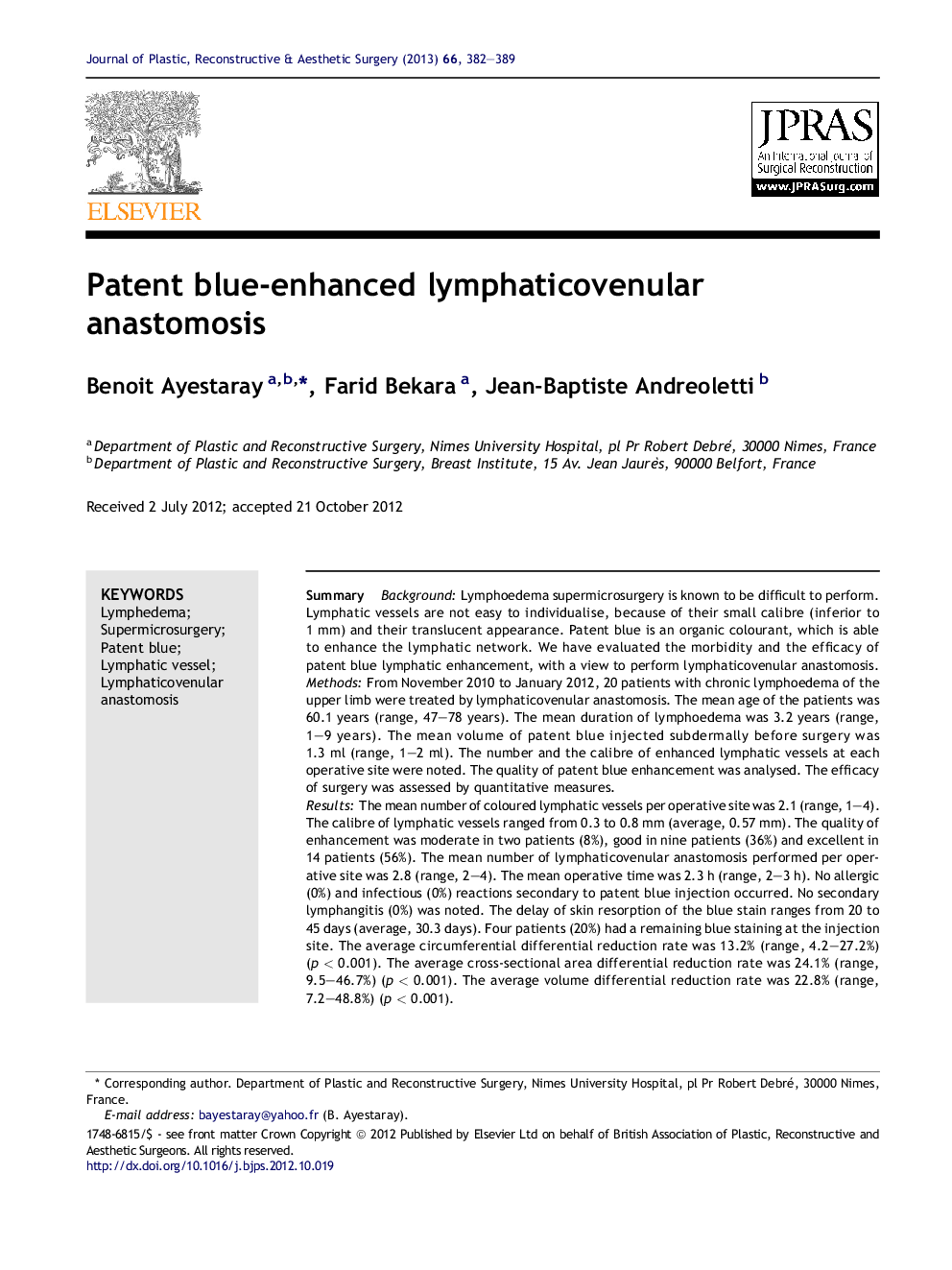| Article ID | Journal | Published Year | Pages | File Type |
|---|---|---|---|---|
| 4117962 | Journal of Plastic, Reconstructive & Aesthetic Surgery | 2013 | 8 Pages |
SummaryBackgroundLymphoedema supermicrosurgery is known to be difficult to perform. Lymphatic vessels are not easy to individualise, because of their small calibre (inferior to 1 mm) and their translucent appearance. Patent blue is an organic colourant, which is able to enhance the lymphatic network. We have evaluated the morbidity and the efficacy of patent blue lymphatic enhancement, with a view to perform lymphaticovenular anastomosis.MethodsFrom November 2010 to January 2012, 20 patients with chronic lymphoedema of the upper limb were treated by lymphaticovenular anastomosis. The mean age of the patients was 60.1 years (range, 47–78 years). The mean duration of lymphoedema was 3.2 years (range, 1–9 years). The mean volume of patent blue injected subdermally before surgery was 1.3 ml (range, 1–2 ml). The number and the calibre of enhanced lymphatic vessels at each operative site were noted. The quality of patent blue enhancement was analysed. The efficacy of surgery was assessed by quantitative measures.ResultsThe mean number of coloured lymphatic vessels per operative site was 2.1 (range, 1–4). The calibre of lymphatic vessels ranged from 0.3 to 0.8 mm (average, 0.57 mm). The quality of enhancement was moderate in two patients (8%), good in nine patients (36%) and excellent in 14 patients (56%). The mean number of lymphaticovenular anastomosis performed per operative site was 2.8 (range, 2–4). The mean operative time was 2.3 h (range, 2–3 h). No allergic (0%) and infectious (0%) reactions secondary to patent blue injection occurred. No secondary lymphangitis (0%) was noted. The delay of skin resorption of the blue stain ranges from 20 to 45 days (average, 30.3 days). Four patients (20%) had a remaining blue staining at the injection site. The average circumferential differential reduction rate was 13.2% (range, 4.2–27.2%) (p < 0.001). The average cross-sectional area differential reduction rate was 24.1% (range, 9.5–46.7%) (p < 0.001). The average volume differential reduction rate was 22.8% (range, 7.2–48.8%) (p < 0.001).ConclusionsPatent blue-enhanced lymphaticovenular anastomosis is a safe and effective technique to treat patients with secondary lymphoedema. Its ease of use, low cost and efficiency should make it used on a priority basis to perform lymphaticovenular anastomosis.
